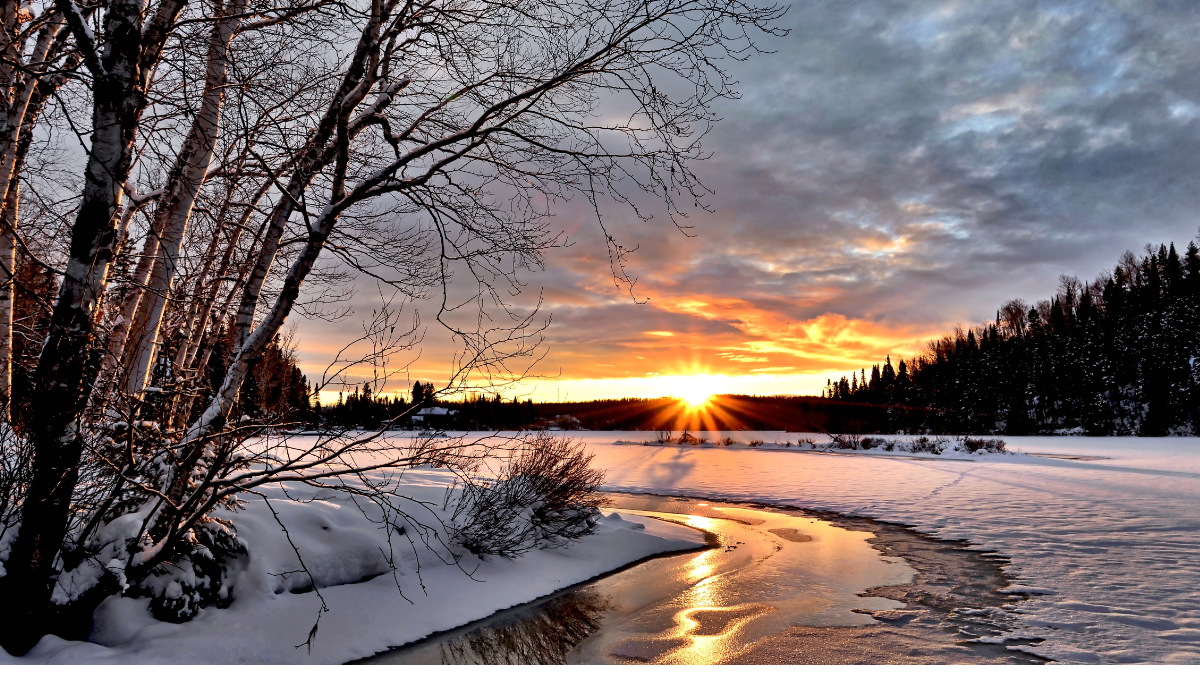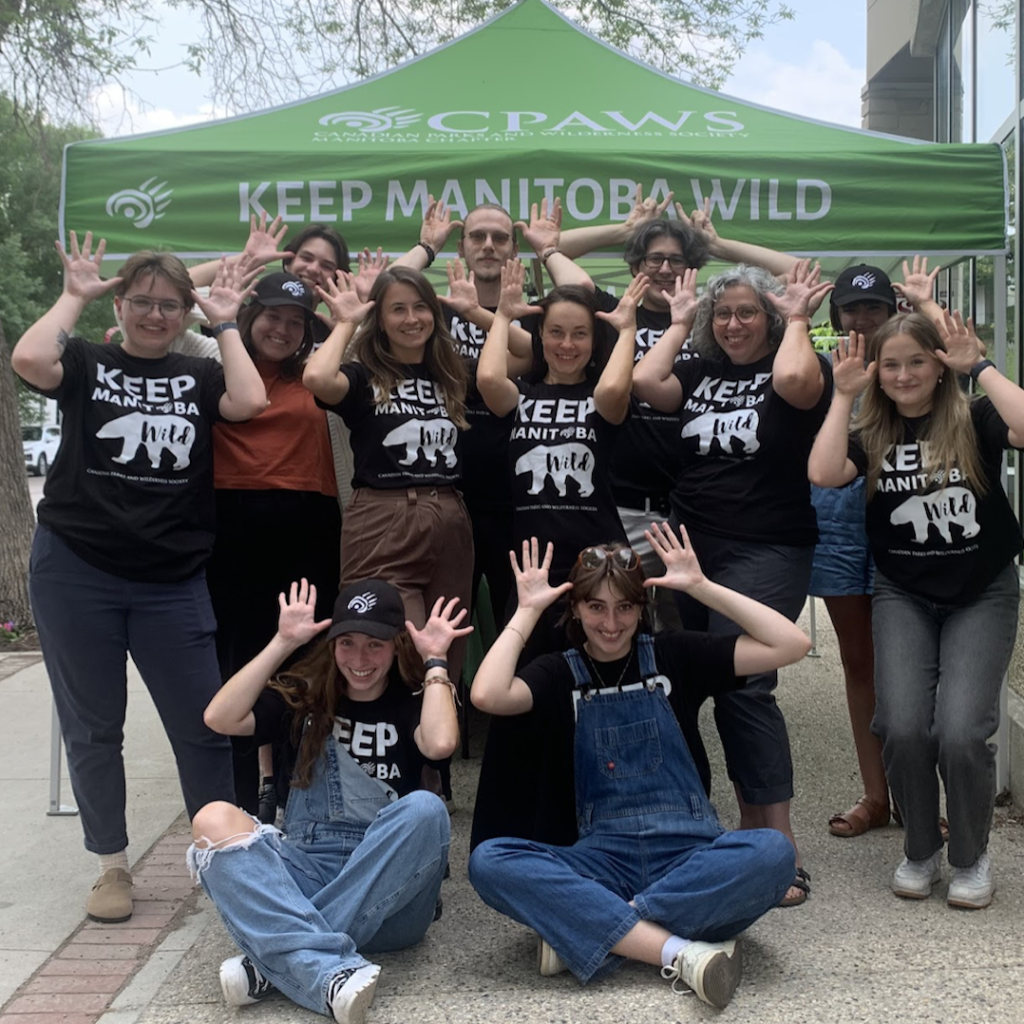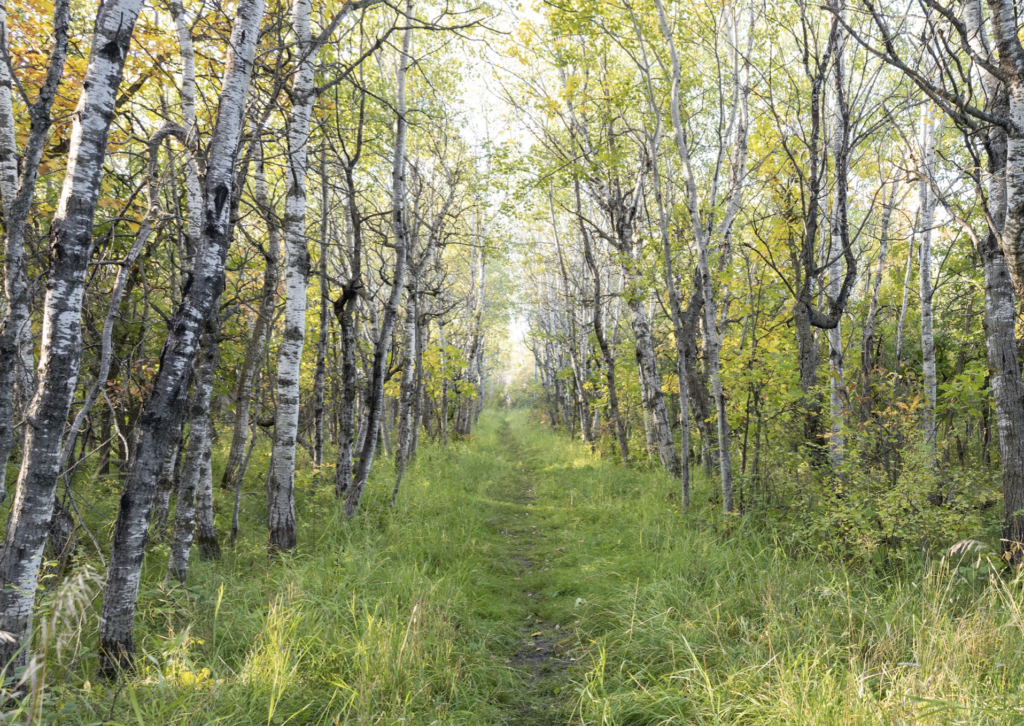
By Ron Thiessen, Executive Director of CPAWS Manitoba
Many of us felt a fair bit of distress this summer amidst a devastating Canadian wildfire season that was nearly seven times more destructive than average.
Mental health experts and scholars have coined new words to explain how we are responding emotionally to climate change: eco-anxiety and solastalgia, the nostalgic pain we feel when the place we live is under assault.
I’ve been working to protect nature for more than 30 years now. I know far too much about the age of extinction. Yet I choose to focus on hope.
There has never been a better time to make big changes – and big impacts – in the world of conservation. Especially right here in Manitoba.
Here are 24 reasons why we should be hopeful about nature in 2024.

Big Picture Reasons to Have Hope for Nature:
- The future is bright for nature in Manitoba after a new government was elected on October 3, 2023, with strong commitments to conservation. That’s thanks in part to nearly 4,500 Manitobans who joined CPAWS Manitoba’s campaign by writing letters and signing postcards urging the leaders of all political parties to protect 30% of Manitoba by 2030. Read more in our post-election blog.
- After almost two decades of negotiations, a historic Global Ocean Treaty was finally reached at the UN in March 2023. CPAWS was among many environmental organizations working to preserve the high seas with this treaty.
- Major progress was also made in preserving ocean areas under Canadian jurisdiction in 2023. CPAWS played a lead role in hosting the Fifth International Marine Protected Areas Congress (IMPAC5) in February, which succeeded in advancing 10 marine protected areas. Read more in this CPAWS press release.
- Complex UN climate change negotiations finally resulted in a global agreement to transition away from fossil fuel in December. Conservation groups also welcomed the inclusion of biodiversity and a 2030 global deforestation goal. View a full summary of COP28 reporting and analysis by The Guardian here.
- The health and wellness benefits of spending time in nature are increasingly being recognized. Scientists have come up with some very cool ways to prove that spending time in nature helps improve sleep, reduce stress, boost immunity, improve academic outcomes in children, alleviate symptoms of ADHD and so much more. Read all about the many ways nature protects your health in our blog.
Conservation Victories In Manitoba

- Manitoba welcomed its 93rd provincial park in July. Pemmican Island was initially passed over when neighbouring islands in Lake Winnipegeosis were protected in 2017 due to a mining claim. The 27-hectare island gained protected status after CPAWS Manitoba alerted provincial leaders that the mining claim had expired. “Protecting this culturally and ecologically significant island is a win for all Manitobans,” CPAWS Manitoba Executive Director Ron Thiessen said in the government press release. “CPAWS congratulates the Manitoba government, regional First Nations, and all the citizens who participated in achieving this successful outcome.”
- Temporary protection of the 2,000 square kilometre Amisk Park Reserve near Thomspon was extended for another 5 years in June, allowing more time for regional Indigenous communities, industry and stakeholders to determine a path forward. Read more about CPAWS Manitoba’s years-long efforts to permanently protect Amisk on our campaign page.
- The Seal River Watershed Alliance is gaining international attention for its efforts to protect 50,000 square kilometres in northern Manitoba. CPAWS Manitoba is a proud member of the initiative and was honoured to join them at a side event on Indigenous-led conservation at the United Nations 2023 Water Conference in New York City. Read more about it on the Alliance website.
- Fisher River Cree Nation’s initiative to preserve the health of the southeastern Interlake is making strong progress, with a draft conservation proposal expected to be released publicly in 2024. Learn more on the initiative website, including a summary of what we heard in the first round of engagement.
- We’ve also got strong progress to report in our campaign with Oceans North to establish a marine protected area in Hudson Bay. Parks Canada has hired a Chuchill-based project manager to help advance the federal government’s proposed national marine conservation area in Western Hudson Bay. More than 7,300 people have sent emails to the federal government and signed postcards in support of our campaign to protect Canada’s great inland sea. Read more in this deep dive by the Narwhal (pun intended).
- Winnipeg signed a global pledge to take 15 tangible actions to protect urban biodiversity and ecosystems. CPAWS Manitoba joined a coalition of environmental groups which led the city to sign the Montreal Pledge. Read more in our blog.
- A small forest along the Red River in St. Norbert may become a city park after residents rallied to save it from being torn up for a housing development. A council committee will be voting on a motion to purchase Lemay Forest on January 11, 2024. Sign a petition to save the forest here and stay up to date on developments on the Coalition to Save Lemay Forest Facebook page.
CPAWS Manitoba Feel-Good Moments of the Year

- When we’re having a bad day, we like to take a look at this blog about the time children carrying posters and handwritten letters asking the Manitoba government to protect polar bears met with Environment and Climate Minister Kevin Klein in the legislature. Those awesome kids give us hope for the future.
- We are humbled by the response of Manitobans – and other Canadians – to our conservation campaigns. We love talking to the people who stop by our big, green Keep Manitoba Wild tent at festivals, farmers’ markets and other events. It’s kind of mind-blowing to realize they’ve signed more than 31,000 postcards in support of our campaigns since June 2021. Our digital campaigns have been even more successful: CPAWS Manitoba supporters have sent more than 34,000 emails to provincial and federal leaders in support of our conservation efforts since 2019.
- Did I mention that we like kids? And that time in nature is good for them? Well, we’re doing our best to help young Manitobans spend more time outside while learning about the natural wonders of our province. Our Outdoor Education program taught 14,938 children and students about Manitoba’s wildlife and natural wonders through 733 place-based workshops, field trips and activities from May 2021 to December 2023.
- We’re also helping adults get outside and connect to nature. More than 19,000 people have registered for our free group hikes, $5 paddle nights, interpretive programs, classes in the park and webinars since we launched the Nature Club in December 2020.
- We got nature on the news! CPAWS Manitoba helped make headlines 34 times in 2023. Check out those clips on our In the News Page. You’ll also find links there to our opinion pieces published by the Winnipeg Free Press on topics like why Manitoba Needs a Plan to Protect Nature, why it’s Time for the Province to Step Up on Conservation and how Indigenous communities hold the Solution to Canada’s Looming Water Crisis.
- Bringing a diverse collection of people together who care about Hudson Bay was the best part of the Beluga Gala we co-hosted at the Qaumajuq Inuit Art Gallery in January to bring attention to our campaign to establish a marine protected area in Hudson Bay.
More Good News

- Study: Protected forests are a climate powerhouse. Protected forests keep significantly more climate-warming carbon out of the atmosphere than unprotected forests, according to a landmark study using data gathered by a laser mounted on the International Space Station. The laser analysis found protected forests store the equivalent of a year’s worth of global fossil fuel emissions. Read more in a blog by Conservation International and an article on Mongabay.
- How indigenous conservation protects Canada’s environment. A flourishing movement of 1,000 “Indigenous Guardians” across Canada are stewarding their traditional lands and waters and redefining what conservation can – and many argue should – look like. Great to see the BBC recognize this important work.
- Tiny Forests With Big Benefits. A movement to cultivate small plots of native plants in cities is showing powerful benefits from lowering temperatures in urban heat islands to storing carbon and providing quality habitat for birds, animals and insects. Read more in the New York Times.
- Grasslands store tons of carbon — and there’s a movement to protect them. Billions of tonnes of carbon are stored under Canadian grasslands, and they’re a critical tool in the struggle to maintain a healthy climate. Read more from CBC’s What on Earth
- What It Takes to Save the Axolotl On the outskirts of Mexico City, biologists are working to reintroduce a treasured amphibian to the wild. But first they must revive an ancient method of farming. A complex tale well told by the New York Times.
- Caribou butts and wolf cameos: How motion-activated cameras may reveal the secrets of a healthy Manitoba herd. Perhaps not the most hopeful conservation story out there, but Bartley Kieves sure knows how to write headlines that make us smile. Read about his reporting from Wapusk National Park in this CBC article and this one.
–Thanks in part to the National Audubon Society for making this blog possible. CPAWS greatly appreciates its support of our boreal conservation efforts in Manitoba–
